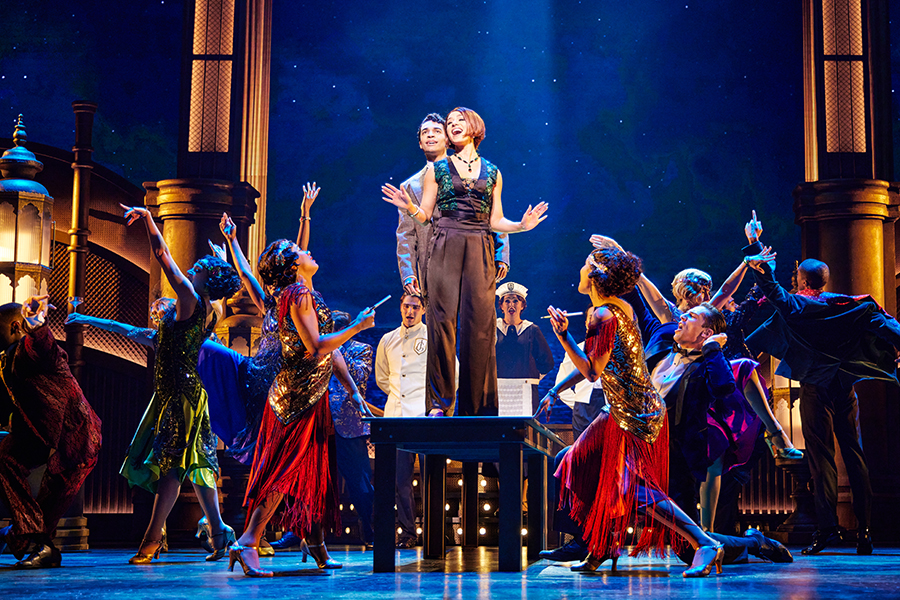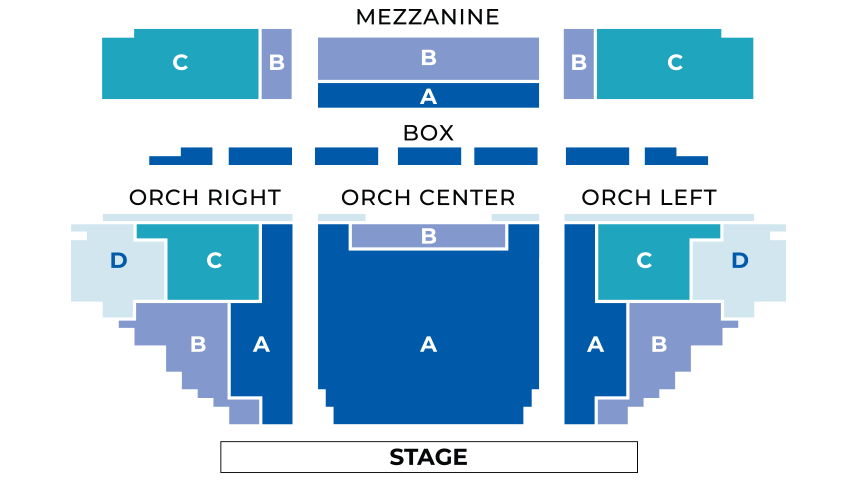“The theatre is not a luxury or a rich man’s diversion; it has always been a necessity to civilization, a far-reaching and enlightening influence.”
– Frank Carrington
In 1795, Samuel Campbell opened The Thistle Paper Mill on the site of the current Paper Mill Playhouse. During its years of operation, the factory produced binder board, wallpaper, tissue paper, newspaper, and books. Destroyed by a fire in the 1860s, it was rebuilt, renamed, and continued to operate as the Diamond Paper Mill until 1928.
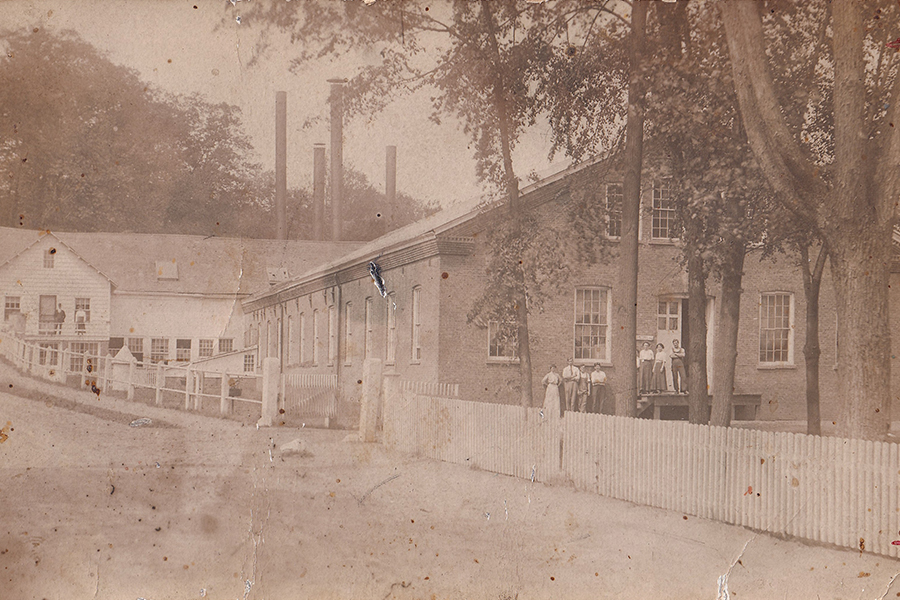
Frank Carrington, an actor and director from California, and Antoinette Scudder, an artist, playwright, and socialite from New Jersey, began their partnership as members of the Short Hills Poetry Society/Newark Arts Club. When one of Antoinettes’ plays was being produced at a small theatre on 5th Avenue and 12th Street in New York, Frank starred in the leading role and their partnership bloomed from there. After conversations with the Newark Arts Club to form a drama branch, Carrington & Scudder founded The Newark Arts Theater in 1929. The traveling theatre group produced various classic plays and original works directed by Carrington and toured their productions at local school auditoriums, including West Side High School, Newark Arts High, and the Montclair Theatre.
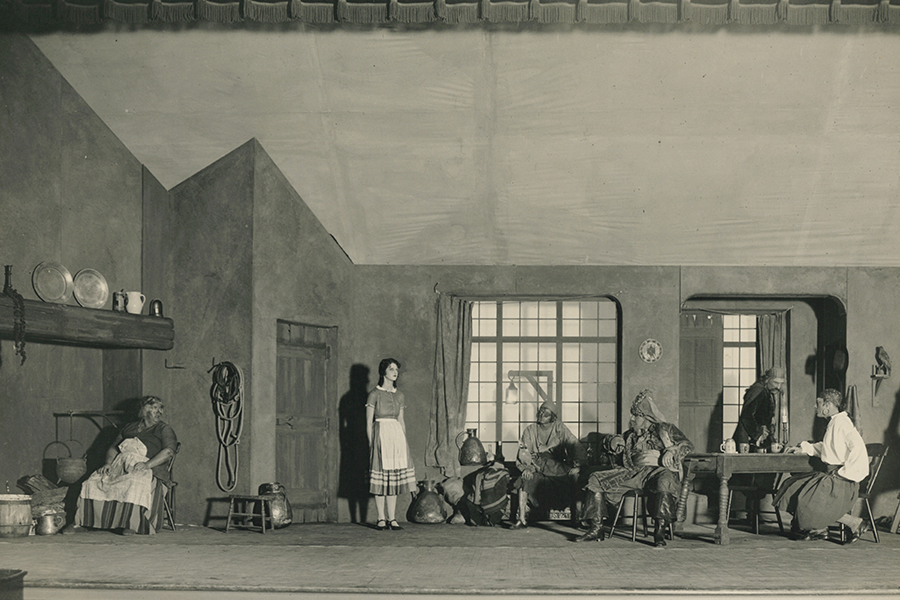
By 1933, Newark Arts Theatre had become a local success, and the demand caused Frank and Antoinette to search for a permanent home for their group of artists. After searching the local townships for vacant barns, old theaters, factory buildings, and churches, they came across an ad for the defunct Diamond Paper Mill in Millburn and began learning all they could about it. With the vision of creating a permanent repertory theater, Antoinette purchased the vacant factory in the fall of 1934, and the construction of Paper Mill Playhouse began in March 1935.
During this time, Carrington and Scudder took two trips to Europe to study theater design in preparation for their newest venture. Antoinette enlisted the help of her cousin, Henry D. Scudder, an architect, and plans were made to transform the old paper mill into a theater. It was to take four years and $1.5 million, supplied by Miss Scudder, to bring the project to fruition. The acoustics had been planned by Harold Burris-Meyer of the Stevens Institute of Technology, a renowned expert on theater sound who commented in his book Scenery for the Theatre that Paper Mill Playhouse was one of only a few theaters in America that was constructed “correctly.”
“I want to build a real community theatre where members do everything. Here’s where people should learn to act, direct, work the lights, make wigs and shoes; and learn the business side too.”
– Frank Carrington
In the four years of preparation to transform the vacant building into a proper theater, the team of the newly formed Paper Mill Playhouse, Inc. presented a variety of concerts, dance recitals, dramatic sketches, and more. Upstairs, above the lobby, an art gallery of Antoinette Scudder’s paintings eventually became a rotating exhibit to feature works from local and national artists. On November 14, 1938, Paper Mill Playhouse opened its doors with The Kingdom of God, a play by Martinez Sierra.
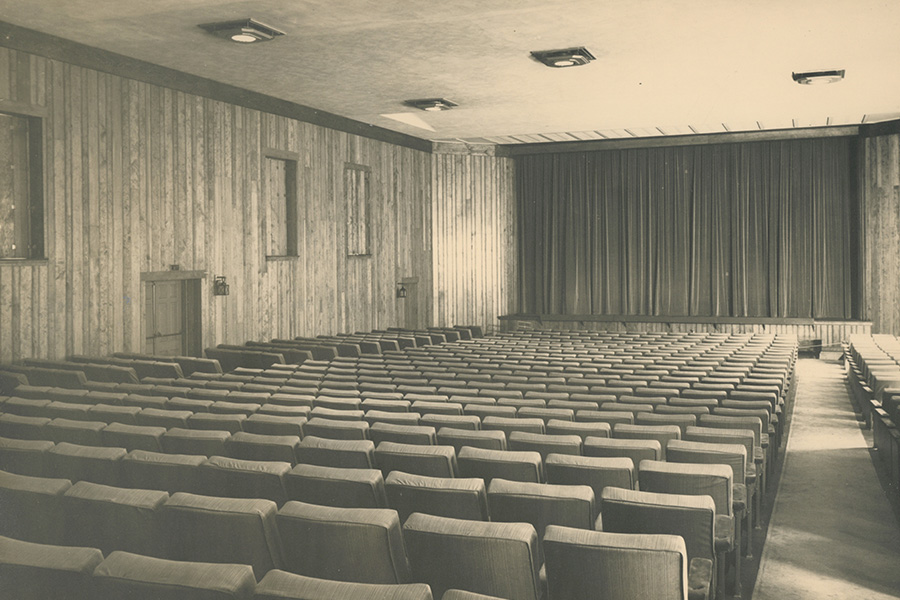
In 1939, Frank Carrington put on The First New Jersey Theatre Festival, and a year later he announced that Paper Mill Playhouse would become a permanent repertory theater experimenting with producing shows year-round. He managed to line up an impressive list of sponsors for this festival which included Eleanor Roosevelt, George Abbott, Joan Crawford, Tallulah Bankhead, George M. Cohan, Mary Pickford, and Billy Rose. In addition to starting the New Jersey Theatre Festival, Carrington established a theater school for young students. Amongst the staff during these early years was modern dance pioneer, Charles Weidman, a faculty member of the Paper Mill Theatre School and resident choreographer for many productions. During its first two seasons, Paper Mill only presented straight plays until its 1940 season when it presented the Gilbert & Sullivan operettas, H.M.S. Pinafore & Trial by Jury.
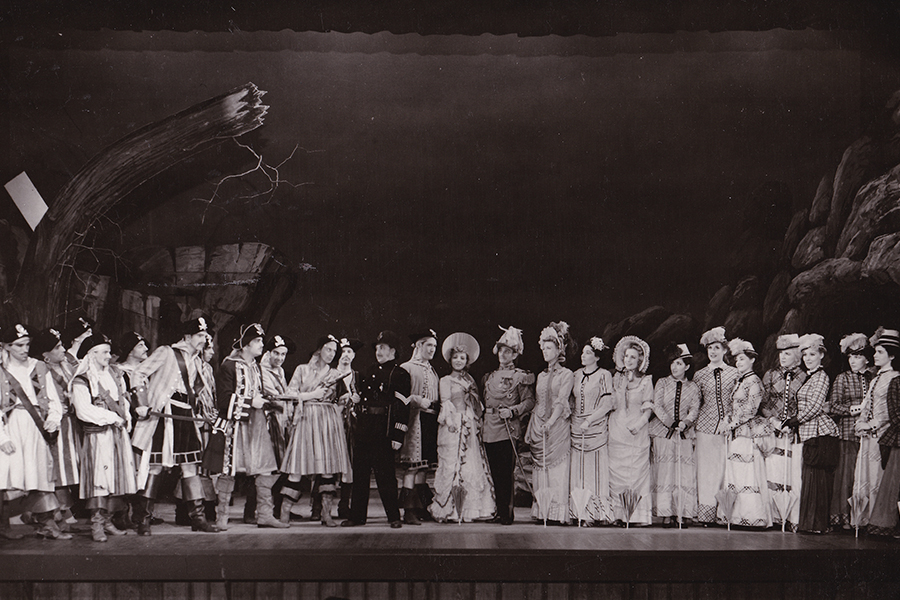
Throughout the 1940s, Paper Mill Playhouse became increasingly well-known for its productions of operettas. Scudder’s close connections with the local press and Carrington’s growing network of peers in the art world, inviting prominent stars to appear in productions, allowed Paper Mill to expand its popularity and visibility. During this time, the theater operated as a repertory company, with most of its shows featuring the same performers in different roles. This created a dedicated fanbase who returned to see their favorites perform.
With Paper Mill’s operettas becoming so popular, the local railroad ran “The Paper Miller”, a special train line that coordinated with the theater’s show schedule so audiences could attend on time. The train became the Morris-Essex Railroad’s solution for limited travel due to gas rationing during the war years. Patrons picked up the train in Newark and the railroad arranged to pick up audience members after the curtain went down at Paper Mill.
By the early ‘50s, Paper Mill began incorporating more musicals into its repertoire of operettas and straight plays. Guest directors were frequently employed along with many stars from the stage and screen.
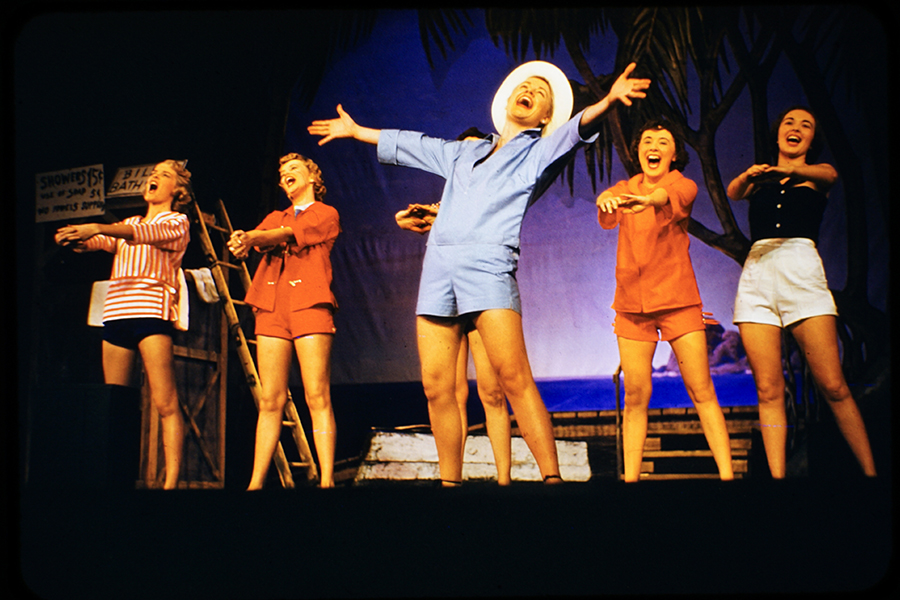
In 1956, Carrington and Scudder collaborated with John H. Bosshart, president of the New Jersey Symphony, to produce a series of concerts resulting in New Jersey’s first Summer Music Festival. In 1958, Antoinette Scudder, the matriarch of Paper Mill Playhouse, passed away leaving behind a legacy as an arts philanthropist.
In 1964, Angelo Del Rossi was hired as Paper Mill’s casting director and later became Associate Producer. On June 14, 1965, Paper Mill’s production of The Glass Menagerie moved to Broadway. After that, the production was invited by the White House Festival of the Arts to give a special performance for President Lyndon B. Johnson and the First Lady. Oscar Hammerstein II’s youngest son, James Hammerstein, directed four productions at Paper Mill during these years, three of them being revivals of his father’s works. Fred Ebb, one-half of the famed music team of Kander & Ebb, makes his directorial debut with a revival of his show, Cabaret (1969).
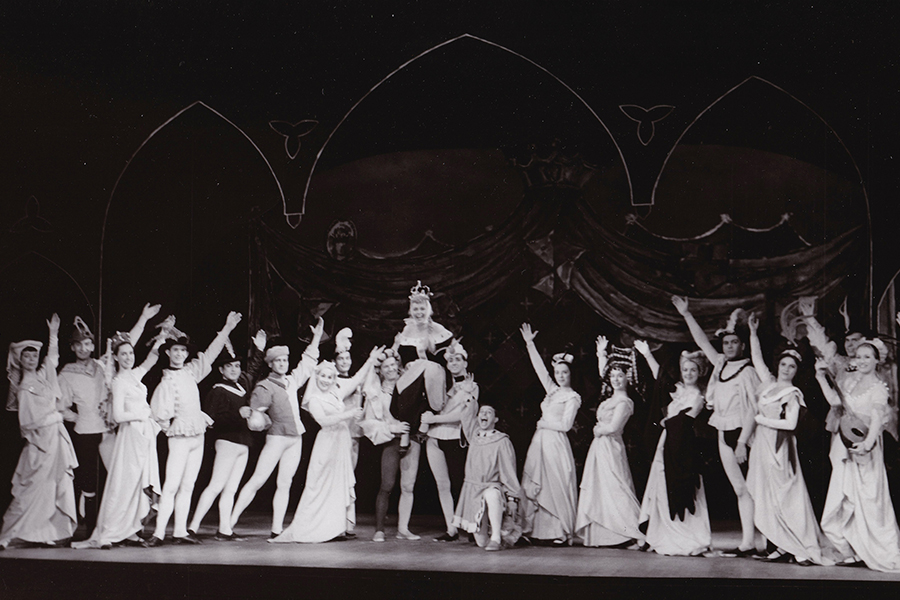
The ‘50s and ’60s are filled with star power, including:
- Donna McKechnie
- Jane Fonda
- Dorothy & Lillian Gish
- Helen Hayes
- Celeste Holm
- Betsy Palmer
- Anthony Perkins
- Joan Fontaine
- Nichols & May
- Shelley Winters
- Pearl Bailey
- Gypsy Rose Lee
- Liza Minnelli
- Eileen Brennan
- Joan Blondell
- Tallulah Bankhead
- Chita Rivera
- Carol Channing
- Rita Moreno
- Gene Wilder
- Eva Gabor
- Betty White
- Gloria Swanson
- Yvonne de Carlo
- Dom DeLuise
- Barbara Cooke
- Sandy Duncan
- William Shatner
- Fabian
In 1971, the New Jersey Ballet began its residency at Paper Mill, staging annual productions of The Nutcracker along with other ballets throughout its decades-long relationship with the theater. On June 20, 1972, Governor William Cahill proclaimed Paper Mill Playhouse as the State Theatre of New Jersey. In July of 1975, Frank Carrington passed, leaving a lasting legacy of directing and producing great productions over four decades at Paper Mill Playhouse. Thereafter, Angelo Del Rossi assumed the leadership position as the new Executive Producer.
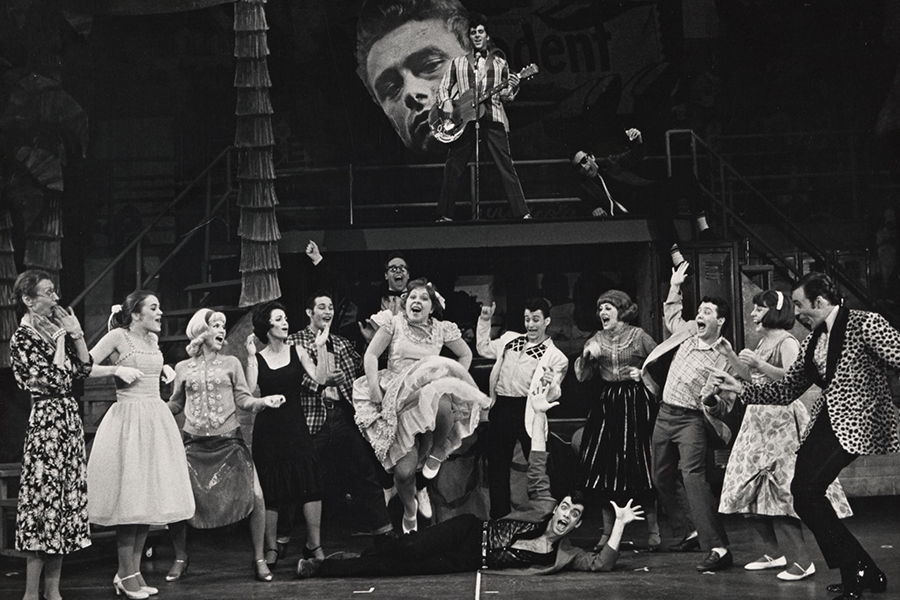
Paper Mill’s star power continues through the ‘70s. Multiple Tony Award and Golden Globe Award-winner, Bernadette Peters, performs in Dames at Sea (1973). Mickey Rooney stars in A Midsummer Night’s Dream (1973) and Helen Gallagher reprises her Tony Award-winning role in No, No, Nanette (1973). Future Dirty Dancing star Patrick Swayze dances in the chorus of The Music Man (1974), Ann Miller stars in Anything Goes (1974), and Cab Calloway stars in Bubbling Brown Sugar (1978).
On January 14, 1980, Paper Mill was devastated by a catastrophic fire. During reconstruction, the theater upgraded its technology, expanded to a larger stage, added more audience seating, and adopted advanced accessibility options for wheelchair users and the hearing-impaired. On October 30, 1982, Paper Mill Playhouse re-opened with its production of Robert and Elizabeth and a gala celebration. In 1984, Robert Johanson became the Artistic Director of the theater, ushering in a new era of creative excellence.
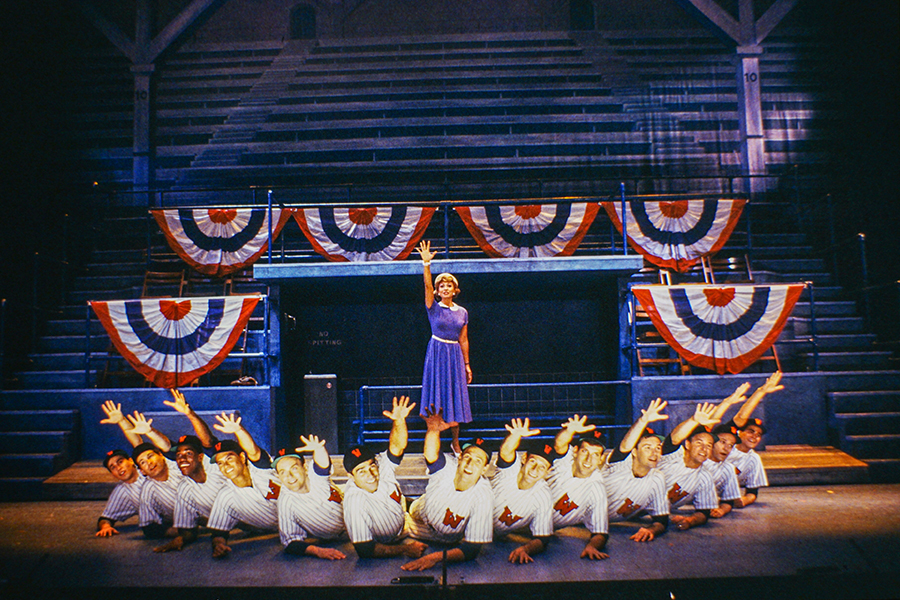
Paper Mill was recognized by the National Endowment for the Arts for its production of Candide in 1986. It was ranked second in the nation for its excellence in theater and opera, after New York City’s Metropolitan Opera. The theater’s production of Show Boat was televised on PBS’s Great Performances on October 27, 1989. It received two Emmy nominations for Outstanding Musical Variety Program and Outstanding Costume Design.
Paper Mill established The Musical Theatre Project from 1985–1991, which served as a developmental program for new theatrical works to be workshopped, evaluated, and, eventually, presented onstage. Select works included Sayonara (1987), Rhythm Ranch (1989), and Mikado Inc. (1990).
Through the ‘90s, Paper Mill became known for its high-quality spectacle revivals of Broadway musicals, as well as the return of some of its early operettas and literary adaptations. Tony Award winner and television star Kristin Chenoweth made her professional debut in Animal Crackers (1993). Academy Award nominee Rob Marshall (Chicago) makes his professional directing debut with a stellar production of Chess (1992). Mark S. Hoebee directs his first Paper Mill production with an acclaimed revival of Dreamgirls (1995).
The Rising Star Awards are created to encourage and reward excellence in New Jersey’s high school musicals. In addition, the Summer Musical Theater Conservatory begins, and the annual New Voices concert debuts. In 1997, actress Anne Hathaway was featured in Paper Mill Playhouse’s New Voices Concert after attending its theater school for several years. In addition, Rising Star Award-winner and Tony Award-winning Broadway star Laura Benanti receive her Actors’ Equity Card in Man of La Mancha. The East Coast premiere of Stephen Schwartz’s and John Caird’s Children of Eden results in Paper Mill’s first original cast album.
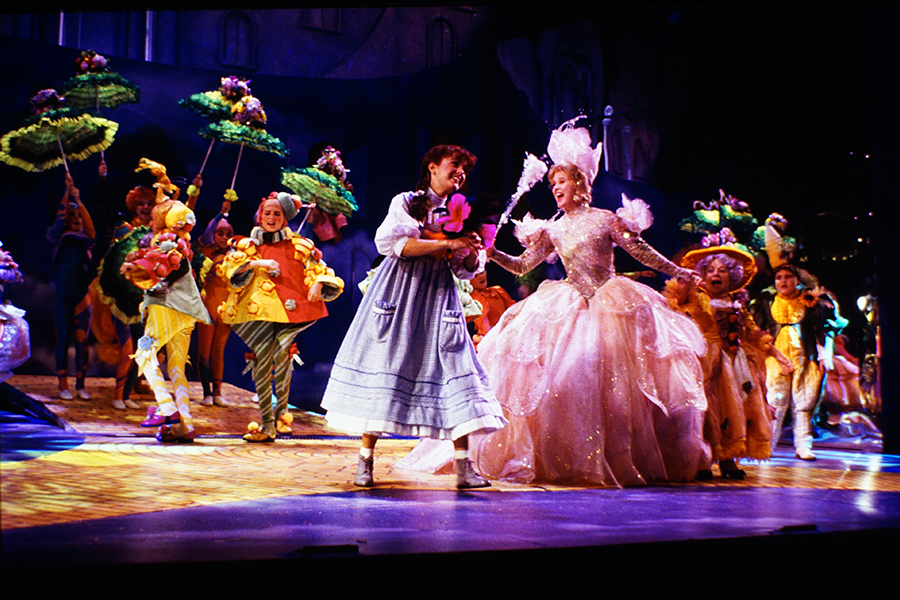
The 1998 revival of Follies has been regarded as one of Paper Mill’s crowning achievements, comprised of a legendary ensemble cast including Ann Miller, Donna McKechnie, and Phyllis Newman, among others. Gypsy (1998) starring Betty Buckley and Deborah Gibson is named one of the “Top Ten Theatrical Events of the Year” by USA Today. In 1999, PBS’s Great Performances televised Paper Mill’s revival of Crazy For You.
Mark S. Hoebee joins the Playhouse staff as Associate Director. In 2003, Angelo Del Rossi retired as Executive Producer, and Michael Gennaro left Chicago’s Steppenwolf Theatre Company to become Paper Mill’s President and CEO. Paper Mill’s productions of Happy Days: The Musical (2007), Little House on the Prairie (2009), and the 25th anniversary production of Les Misérables (2010) all launch national tours.
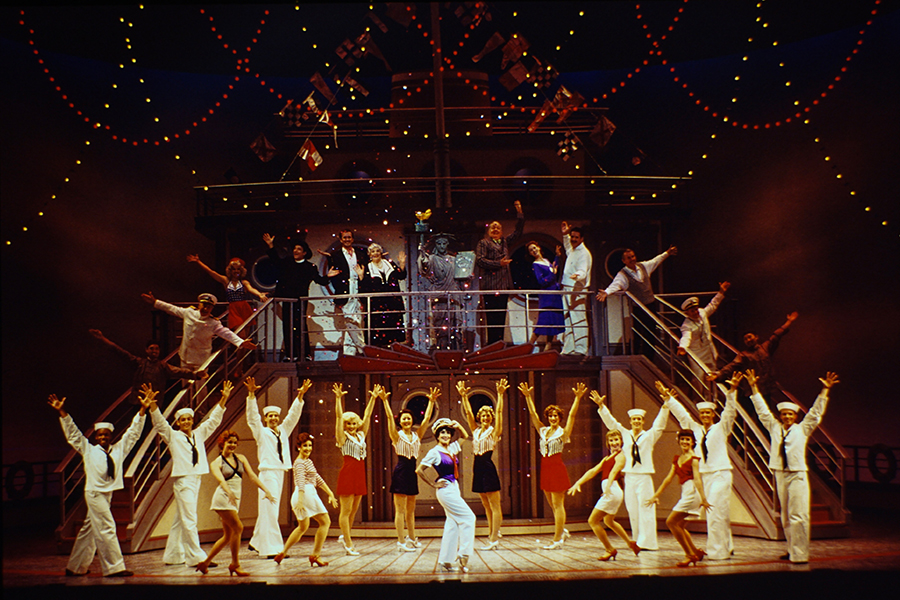
In 2007, a financial crisis caused Paper Mill Playhouse to launch a “Save the Theater” campaign to enable the 2006–2007 season to finish its productions of Seven Brides for Seven Brothers and Pirates!. The community came together and donated more than one million dollars in four weeks. In June of 2008, Millburn Township voted to purchase Paper Mill Playhouse’s four-acre site and buildings for nine million dollars, marking the first time in New Jersey’s history that a municipality has supported an arts organization at such a high level. That same year, Mark S. Hoebee was promoted to Producing Artistic Director and was joined in 2010 by Managing Director, Todd Schmidt, in taking the reins of the theater. Under their leadership, Paper Mill embarks on a series of partnerships with commercial entities to present new musicals while still producing and reviving classic shows.
In an unprecedented partnership with Disney Theatrical Productions, the 2011–12 season opened with the world premiere of Newsies – which subsequently opened on Broadway the following spring. Paper Mill also continues to be at the forefront of accessibility and, in keeping with its “Theater for Everyone” credo, is the first theater in the country to present “Sensory-Friendly Performances” for patrons on the autism spectrum and with developmental disabilities.
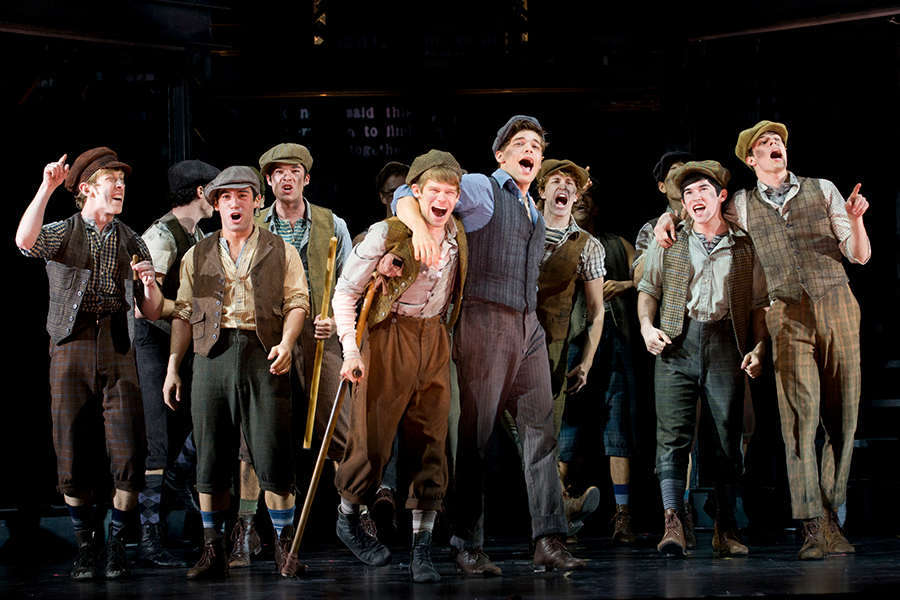
In the fall of 2013, Paper Mill kicked off its season with the world premiere, Broadway-bound production of Honeymoon in Vegas starring Tony Danza. The theaters’ 2015–16 season saw its two world-premiere productions, A Bronx Tale and The Bandstand, also transfer to Broadway. The premiere of The Bodyguard: The Musical (2016) launched an extensive North American tour in 2017.
At the 2016 Tony Awards, Paper Mill Playhouse received the Regional Theatre Tony Award, recognizing Paper Mill’s continuous and significant level of artistic achievement and its contributions to the growth of the art form on a national level.
During the COVID-19 pandemic, Paper Mill adapted to an all-digital season in 2020–2021. Since returning to in-person shows, the theater has produced the world premieres of The Wanderer (2022), HERCULES (2023), and The Great Gatsby (2023).
